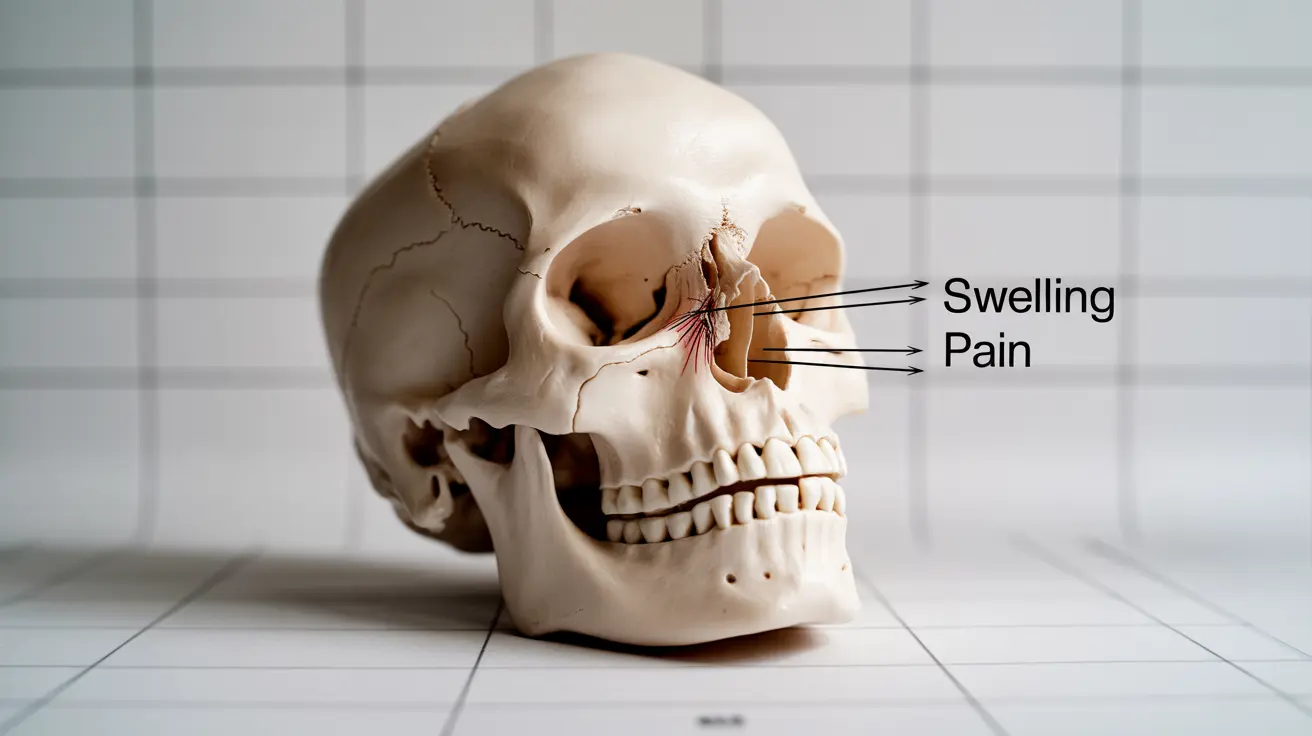A right orbital fracture is a serious injury affecting the bone structure surrounding the right eye. This type of facial trauma requires prompt medical attention as it can impact vision, eye movement, and facial appearance. Understanding the signs, diagnostic process, and treatment options is crucial for anyone who has experienced facial trauma or suspects an orbital fracture.
Understanding Right Orbital Fractures
The orbital socket is a complex structure of bones that houses and protects the eye. When trauma occurs to the right side of the face, these bones can break or crack, leading to various complications. The severity and location of the fracture determine the necessary treatment approach and potential long-term outcomes.
Signs and Symptoms
Recognizing the symptoms of a right orbital fracture is crucial for seeking timely medical care. Common indicators include:
- Swelling and bruising around the right eye
- Pain when moving the eye
- Double vision or blurred vision
- Numbness in the cheek or upper lip
- Sunken or bulging appearance of the eye
- Difficulty looking up, down, or sideways
Diagnostic Process
Healthcare providers use several methods to confirm and assess the extent of a right orbital fracture:
Physical Examination
The doctor will carefully examine the area around your eye, checking for visible deformities, eye movement restrictions, and sensory changes.
Imaging Tests
Various imaging techniques help visualize the fracture:
- CT scans (most commonly used)
- X-rays
- MRI in specific cases
Treatment Approaches
Treatment for a right orbital fracture varies based on severity and specific symptoms:
Conservative Management
For minor fractures, treatment may include:
- Ice therapy
- Head elevation
- Nasal decongestants
- Antibiotics if necessary
- Pain management medications
Surgical Intervention
Surgery might be necessary in cases involving:
- Large fractures affecting eye position
- Persistent double vision
- Trapped eye muscles
- Significant aesthetic concerns
Recovery and Prevention
Recovery from a right orbital fracture requires careful attention to:
- Following medical instructions precisely
- Avoiding strenuous activities
- Protecting the affected area
- Attending follow-up appointments
- Monitoring for vision changes
Frequently Asked Questions
What are the most common symptoms of a right orbital fracture that I should watch for? A right orbital fracture typically presents with swelling around the eye, pain with eye movement, possible double vision, and numbness in the cheek area. Immediate medical attention is needed if you experience these symptoms after facial trauma.
How is a right orbital fracture diagnosed and what imaging tests are used? Diagnosis typically involves a physical examination followed by imaging tests, primarily CT scans, which provide detailed views of the bone structure. X-rays and MRIs may also be used depending on the specific case.
What treatment options are available for a right orbital fracture, and when is surgery necessary? Treatment options range from conservative management with ice and medication to surgical repair. Surgery becomes necessary when there's significant displacement of bones, trapped muscles, persistent double vision, or cosmetic concerns that won't resolve naturally.
Can a right orbital fracture cause permanent vision or eye movement problems? Yes, without proper treatment, a right orbital fracture can lead to permanent vision changes or restricted eye movement. However, prompt medical attention and appropriate treatment significantly reduce the risk of lasting complications.
What activities or precautions can help prevent complications after a right orbital fracture? To prevent complications, avoid nose-blowing, strenuous activities, and contact sports during healing. Keep the head elevated, apply ice as directed, take prescribed medications, and attend all follow-up appointments with your healthcare provider.




